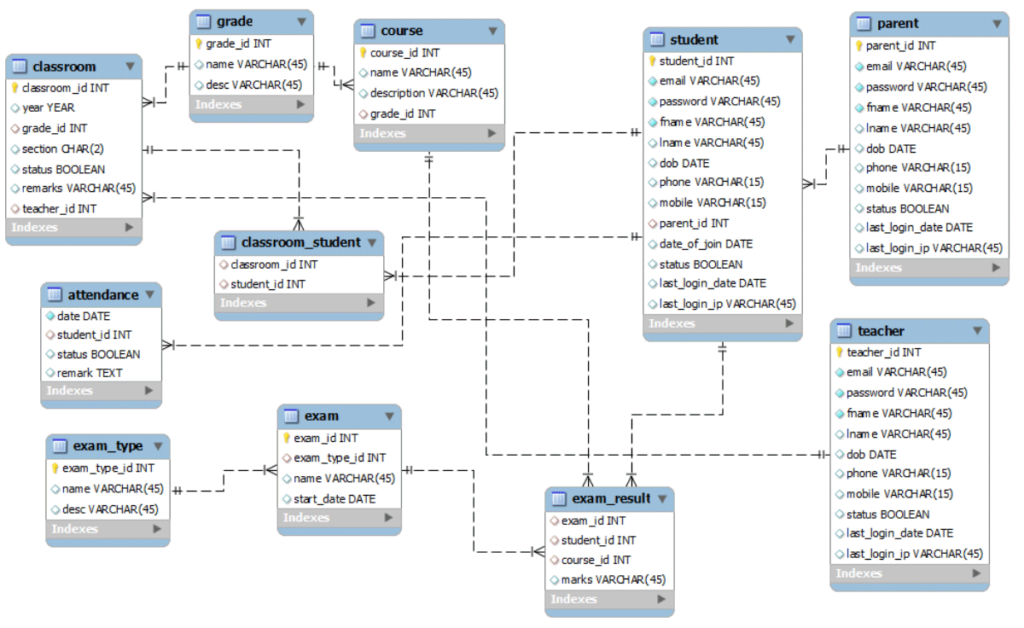Key Features of a Database Management System (DBMS)
A database management system (DBMS) is a software package designed to define, manipulate, and manage databases.
A DBMS typically provides a set of tools for managing databases. These tools may include a graphical user interface (GUI), a command-line interface (CLI) or a web-based interface. The tools may also include utilities for importing and exporting data, backup and recoveries, and for managing security.
All database management systems have one goal in mind—to take the information you enter into it, and store it effectively. Then, when you need to get that information back, you can access it quickly without any problems or headaches.
Database Management System
1. Data Definition Language (DDL) – The DDL component allows users to define the structure and layout of the database. Users can create tables, specify data types, set constraints, define relationships between tables, and establish security permissions. By utilizing the DDL, users can customize the database according to their specific requirements.
2. Data Manipulation Language (DML) – The DML aspect allows users to interact with the database and manipulate data. Users can insert, update, delete, and retrieve data from the database using SQL (Structured Query Language) or other programming languages. The DML component is crucial for managing data within the database system.
3. Data Querying and Reporting – DBMS provides a query language, typically SQL, to perform complex database searches and generate reports based on specific criteria. Users can write queries to extract precise information from the database effortlessly. With this feature, analysts and stakeholders can extract useful insights from the database.

4. Data Integrity and Security – DBMS enforces data integrity by implementing various constraints, such as entity integrity, referential integrity, and domain integrity. These constraints ensure that data remains consistent, accurate, and free from errors. Additionally, advanced security features like user authentication, access control, and encryption protect the database from unauthorized access and data breaches.
You want to make sure that you have proper security on your database management system. Otherwise, your information may be compromised. Nobody wants their competitors to get hold of their client list, and hospitals and psychiatrists, among others, must keep their information about their clients confidential. Security can be enforced on each application that exists within a database management system, or it can be set up on the system itself. This will depend upon how many users are accessing the system and how many applications are running on that system.
5. Data Backup and Recovery – Database Management Systems (DBMS) are designed with built-in mechanisms that ensure the safety and integrity of data in the event of system crashes, human errors, or natural disasters. These mechanisms include backup and recovery procedures that allow users to restore data to its last known state or to a previous point in time. Additionally, DBMS may also provide tools for data replication, data mirroring, and failover clustering to ensure high availability and avoid downtime. By implementing these mechanisms, DBMS can help organizations safeguard their critical data and minimize the impact of unexpected events.
Regularly scheduled backups ensure that data is protected and can be restored in case of data loss. This feature plays a significant role in maintaining data availability and reliability.
Advantages of using the database management system
1. Data Centralization: A DBMS allows for the centralization of data, meaning that all data is stored in a single location. This centralization eliminates redundancy and inconsistency, making it easier to manage and access data.
2. Data Consistency: A DBMS, or database management system, is a software tool used to manage and organize data. By applying different types of constraints, such as primary key, foreign key, and check constraints, DBMS ensures that data remains accurate, consistent, and free from errors. For instance, the primary key constraint ensures that each record in a table is unique, while the foreign key constraint ensures that data between related tables remains consistent. By ensuring data integrity, DBMS helps prevent any issues that may arise from inaccurate or conflicting data, making it an essential tool for modern organizations.
3. Data Security: DBMS provides advanced security features, such as user authentication, access control, and encryption, to protect the database from unauthorized access and data breaches. This enhances data security, ensuring that sensitive information remains protected.
4. Improved Data Accessibility: DBMS allows for efficient data retrieval using query languages like SQL. Users can easily write queries to extract specific information from the database, enabling quick and accurate access to relevant data.
Conclusion
In conclusion, a DBMS can offer many advantages over a traditional file-based database. A DBMS can help you control the data in your database, provide security for your data, manage concurrent access to your database, and optimize your database performance. A DBMS can also provide a data dictionary, support for standards, and support for SQL.
There are a number of different database management systems available, each with its own strengths and weaknesses. The right DBMS for a particular application depends on several factors, including the type of data to be stored, the performance requirements, the scalability requirements and the budget.